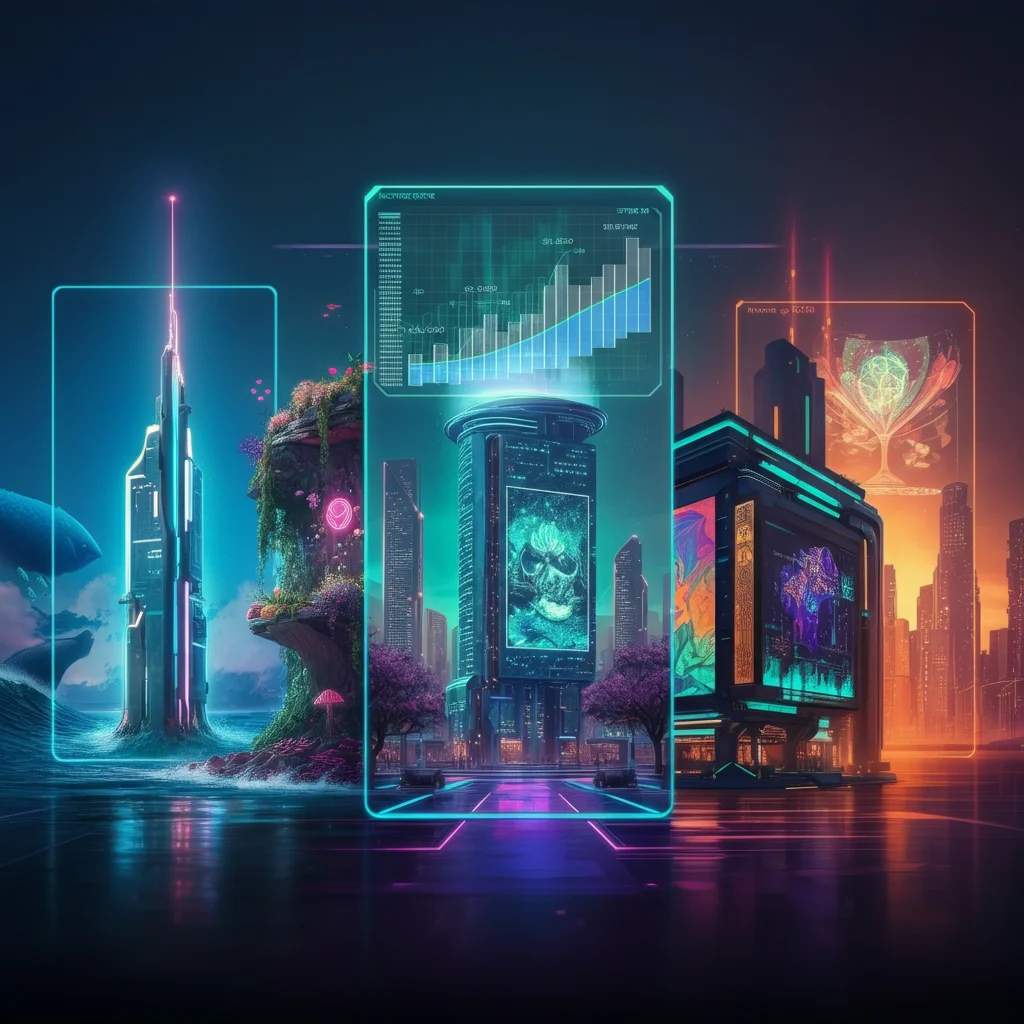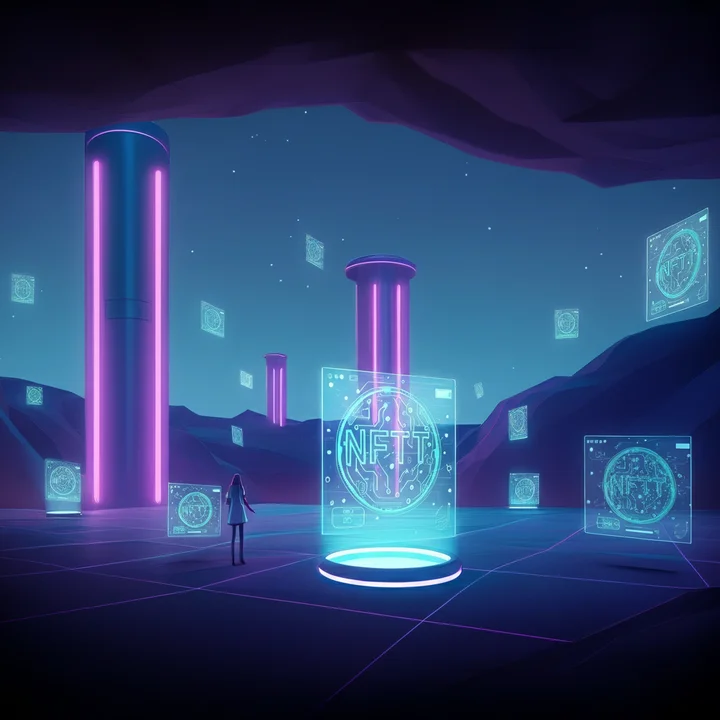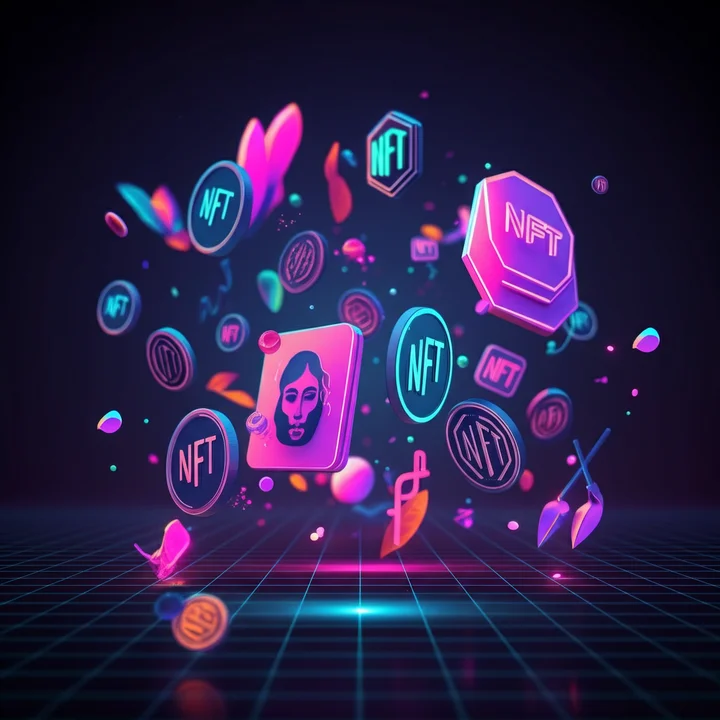The rise of NFTs has introduced a new era of digital ownership, transforming everything from art to gaming and beyond. Whether you're an artist, a collector, or a trader, choosing the right NFT marketplace is crucial to your success. Each platform offers unique features, benefits, and challenges suited to different needs. But with so many options, where should you start?
This guide reviews the top NFT marketplaces—including OpenSea, Magic Eden, Rarible, Foundation, and Blur. We’ll assess their pros, cons, and standout features while considering key factors like fees, blockchain support, and ease of use. Plus, you’ll find tips and a comparison table to help you decide which platform aligns with your goals.
Why Choosing the Right NFT Marketplace Matters
Selecting the right marketplace isn’t just a matter of convenience; it can significantly impact your costs, transaction speed, and exposure to the right audience. The right choice will maximize your potential ROI and ensure a seamless user experience, whether you're buying or selling.
Transaction fees and gas costs: Some platforms have higher fees that eat into your profit margins.
Blockchain support: Not all marketplaces support the same blockchains. This may limit the NFTs you can buy or sell.
Community and discoverability: Certain platforms attract larger or more niche audiences, affecting your reach.
User interface (UI): A user-friendly experience can save you time and frustration.
Now, let's take a deeper look at the top NFT marketplaces.
Key Evaluation Factors
Before choosing a marketplace, consider the following factors:
Fees - Platforms charge service fees and blockchain-specific gas fees.
Ease of Use - Accessible navigation and simple processes make buying and selling more efficient.
Blockchain Support - Ethereum dominates, but Solana, Tezos, and others are gaining traction.
Community - The marketplace’s user base can impact exposure and opportunities.
Extra Features - Tools like royalty splits or multi-chain capabilities add value for creators and collectors.
Marketplace #1: OpenSea
OpenSea is the biggest and most well-known NFT marketplace, often considered the go-to platform for beginners and experienced users alike.
Pros:
Vast selection: Supports everything from art and music to domain names and virtual land.
Cross-chain compatibility: Recently introduced support for blockchains like Solana and Polygon.
User-friendly: Offers tools to create and list NFTs directly on the platform.
Large audience: Widespread community ensures high exposure for sellers.
Cons:
High gas fees: Built primarily on Ethereum, meaning fees can spike during blockchain congestion.
Limited customization: Compared to smaller platforms, it offers fewer curation options for artists.
Standout Features:
Lazy minting (you can list NFTs without upfront gas fees).
Payment options include crypto wallets like MetaMask and Coinbase.
Marketplace #2: Magic Eden
Magic Eden operates on the Solana blockchain, making it a popular alternative for users seeking lower fees.
Pros:
Low gas fees: Solana's blockchain architecture reduces transaction costs to pennies.
Speed: Fast transaction processing thanks to Solana’s proof-of-stake model.
Exclusive access: Magic Eden features Solana-native collections.
Cons:
Blockchain-specific: Limited to Solana and its ecosystem.
Smaller audience: Less discoverability compared to OpenSea.
Standout Features:
Launchpad for creators to mint and promote their NFTs without technical skills.
Marketplace #3: Rarible
Rarible stands out with its community-driven governance model and multi-chain support.
Pros:
Multi-chain compatibility: Supports Ethereum, Flow, and Tezos blockchains.
Customization: Artists can create tailored storefronts for their collections.
Decentralized governance: Token holders vote on key platform changes.
Cons:
Limited audience: Smaller reach compared to OpenSea.
Fees: Standard 2.5% transaction fee, higher than Magic Eden.
Standout Features:
Native token ($RARI) incentivizes participation.
Royalties for creators are customizable per sale.
Marketplace #4: Foundation
Foundation caters primarily to artists looking for an upscale, curated experience.
Pros:
Exclusive curation: Focus on high-quality, unique digital art.
Creator-first approach: Designed to help artists maximize their visibility and earnings.
Cons:
Niche audience: Smaller user base means less discoverability for certain sellers.
Invitation-only: Sellers must be invited to join, limiting accessibility.
Standout Features:
Active bidding system for pricing NFTs.
Exceptional interface designed for showcasing digital art.
Marketplace #5: Blur
For professional NFT traders, Blur is a game-changer. It offers advanced trading tools and detailed analytics.
Pros:
Advanced analytics: Real-time data and portfolio management tools.
Gas optimization: Reduces transaction fees through smart contract batching.
Aggressive incentives: Airdrops for active traders.
Cons:
Complex UI: Not beginner-friendly.
Trader-focused: Limited support for general creators or everyday buyers.
Standout Features:
NFT sweeper tool to buy multiple NFTs at once.
Detailed charting tools to track floor prices.
Comparison Table of Top NFT Marketplaces
Marketplace | Blockchain Support | Fees | Best For | Unique Features |
|---|---|---|---|---|
OpenSea | Ethereum, Polygon, Solana |
| General users | Lazy minting, large audience |
Magic Eden | Solana | 2% | Low-cost transactions | Creator launchpad |
Rarible | Ethereum, Flow, Tezos |
| Customization | Token-based governance |
Foundation | Ethereum | 5% | Artists and curated buyers | Exclusive artist invitations |
Blur | Ethereum | 0% (traders) | Pro traders | Advanced analytics, sweeper |
Tips for Buyers and Sellers
For Buyers:
Compare gas fees across blockchains before making a purchase.
Use secure wallets like Ledger Nano for added safety.
Check the marketplace’s reputation; beware of potential scams.
For Sellers:
Choose a platform that aligns with your target audience and art style.
Consider cross-chain marketplaces to maximize exposure.
Optimize metadata and use detailed descriptions to attract buyers.
Start Your NFT Journey Today
With countless marketplaces available, selecting one depends on your specific goals. Whether you're a first-time buyer on OpenSea or an experienced trader using Blur, the right platform can transform how you engage with the NFT market.
Thinking about minting your first NFT or exploring new collections? Now's the time to jump in and explore these exciting platforms.



